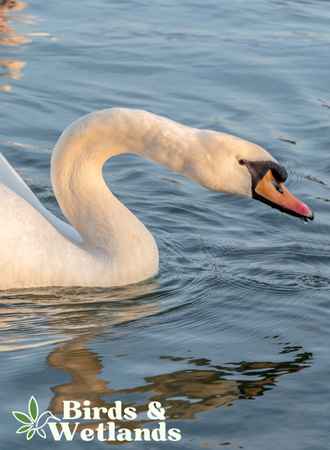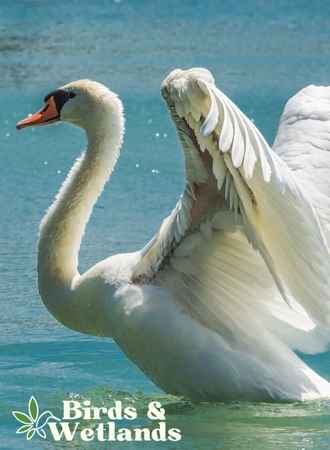The swan is an iconic symbol of grace, beauty and elegance. Its graceful neck and gentle white feathers have inspired poets and painters for centuries. But beneath the swan’s elegant exterior lies a complex and unique anatomy, one that raises an interesting question – do swans have backbones?
The answer is yes — swans do have a backbone, just like all other birds. These birds have long necks that allow them to reach food in the water, while their powerful webbed feet give them great agility. Their wings are broad and strong, allowing them to fly great distances.
Key Takeaways on Swan Anatomy
- Swans have a backbone, just like all other birds.
- Swans have 24 or more neck vertebrae, which allow them to feed, preen and swim.
- Swans, geese and ducks have lightweight bones to allow them to fly efficiently and make sudden turns in the air for survival in the wild.
How many neck vertebrae do swans have?
Neck vertebrae are the bones that make up the neck and support the head and body. They are found in all vertebrates, including humans and mammals, and are typically composed of seven cervical vertebrae. These vertebrae are connected by ligaments and muscles, allowing the head and neck to move in various directions.
Swans have 24 or more neck vertebrae due to their long neck. This allows the birds to bend and turn their necks in various directions, allowing them to feed, preen, and swim.
The extra vertebrae also help to support the weight of the swan’s head and long neck and protect the swan’s neck from injury.

Do swans have hollow bones?
Many birds such as swans, geese and ducks have light and mostly hollow bones for several reasons. One of the primary reasons is that this structure allows them to fly efficiently. Birds must be able to travel long distances and maintain altitude; a lightweight skeleton is essential for achieving this.
The bones of birds are hollow and filled with air spaces, called pneumatization. This makes the bones much lighter than solid bones without sacrificing strength. The air spaces also help to insulate the bird’s body and reduce heat loss.
Another reason flying birds have light is because they need to maneuver quickly and easily in the air or while in flight. The swan is a large bird and having a lightweight skeletal system allows it to make sudden turns and changes in direction, which is important for survival in the wild.
Furthermore, many species of flying birds have a large pectoral muscle that attaches to the breastbone. This muscle is responsible for the up-and-down motion of the wings. A lightweight skeleton allows the pectoral muscle to be larger, which in turn allows for greater lifting power.

Related Questions on Swans & Other Animal Species
What swans can you find in North America?
North America is home to three species of swans: trumpeter swan, tundra swan, and mute swan.
The trumpeter swans are the largest waterfowl in the United States and can have over ten feet long wingspan! It is typically found in Alaska and western Canada but can also be seen migrating further south during winter months.
The tundra swan also breeds in Alaska and coastal British Columbia. It will migrate to parts of the United States if food sources become available.
The mute swans are the most commonly identified swans, native to Eurasia. Although escaped populations have been known to thrive near ocean coasts and temperate areas throughout North America.

How does a swan’s respiratory system work?
A swan’s respiratory system is a complex and efficient system that allows the bird to extract oxygen as the bird inhales fresh air and efficiently deliver it to the body’s cells.
The swan’s lungs are located towards the back of the body and are relatively small compared to the body size. The lungs are divided into several small, thin-walled sacs called alveoli, responsible for gas exchange. The alveoli are surrounded by a network of blood vessels called capillaries, which transport oxygen and carbon dioxide.
The swan’s respiratory system also includes a set of air sacs that help increase gas exchange efficiency. These air sacs are located in the neck, thorax, and abdomen and connect to the lungs through small openings called bronchi.
The air flows through the air sacs, lungs and alveoli, which increases the surface area available for gas exchange.
To breathe, a swan must use its powerful intercostal muscles located between the ribs in their rib cage. These muscles contract and relax, causing the chest to expand and contract, which in turn causes air to flow in and out of the lungs. The swan’s diaphragm also plays a role in breathing, as it helps to expand and contract the chest.
The swan’s respiratory system also includes a set of specialized structures called nasal conchae, located in the nasal cavity. These structures help to humidify and warm the air before it reaches the lungs, which helps to prevent the alveoli from drying out.
What are invertebrates?
Invertebrates are diverse animal species that lack a backbone or vertebral column. They make up the vast majority of animal species on Earth, with estimates suggesting that there are over 30 million different invertebrate species.
Invertebrates can be found in nearly every habitat in the world, from the ocean’s depths to the tops of mountains. They play important roles in ecosystems as pollinators, decomposers and prey for other animals.
One example of an invertebrate is the arthropod. Arthropods are a diverse group of animals that includes insects, crustaceans, arachnids, and millipedes. They are characterized by their exoskeletons, which provide support and protection, and their joint appendages, which allow for greater mobility.

What other animals have backbones?
Many living things, particularly animals, have backbones. Besides birds such as chickens, pigeons and owls, amphibians and reptiles have backbones, so do fish.
Do swans produce uric acid?
Yes, these birds do. While many birds excrete waste as liquid, swans are part of a larger group of birds that expel their nitrogenous waste as uric acid from their bodies, a solid form of nitrogenous waste typical in reptiles and birds.


